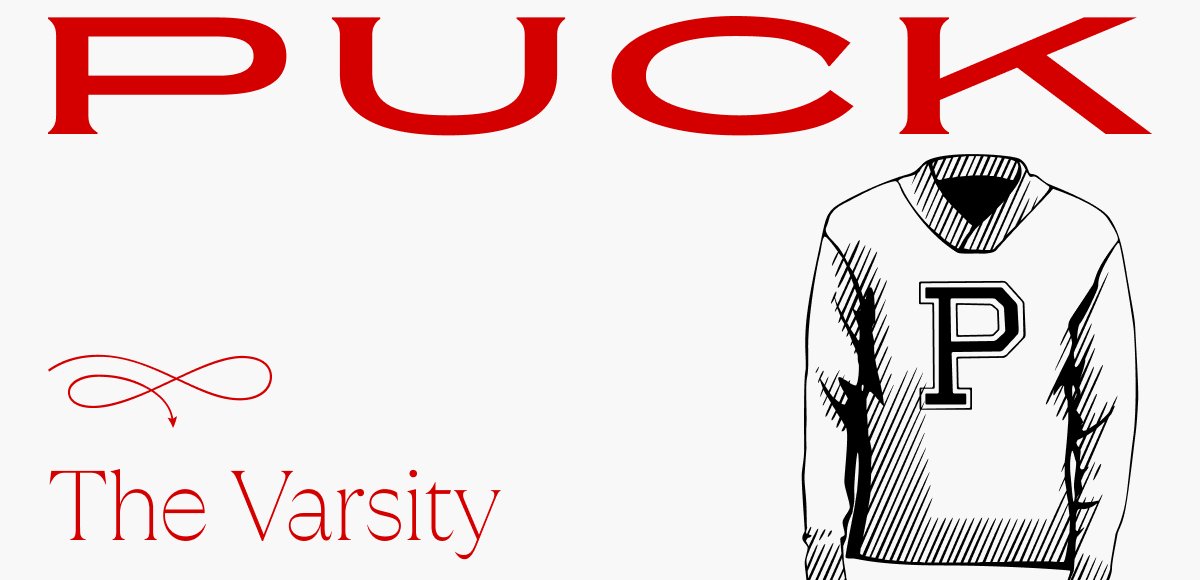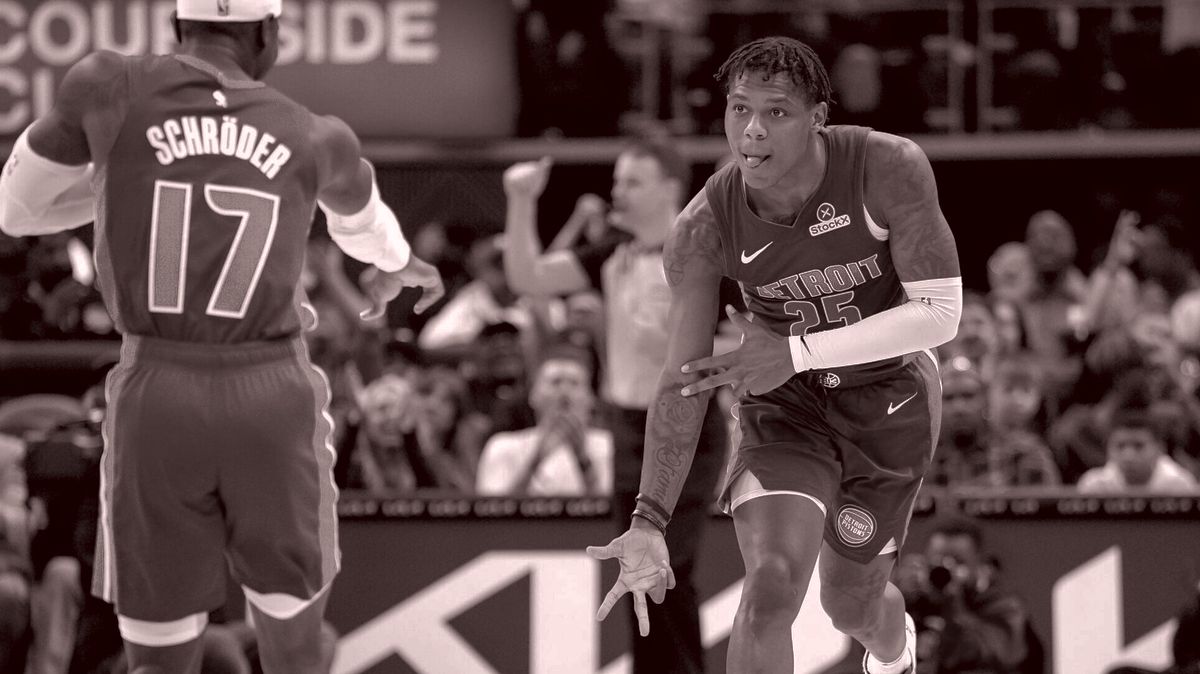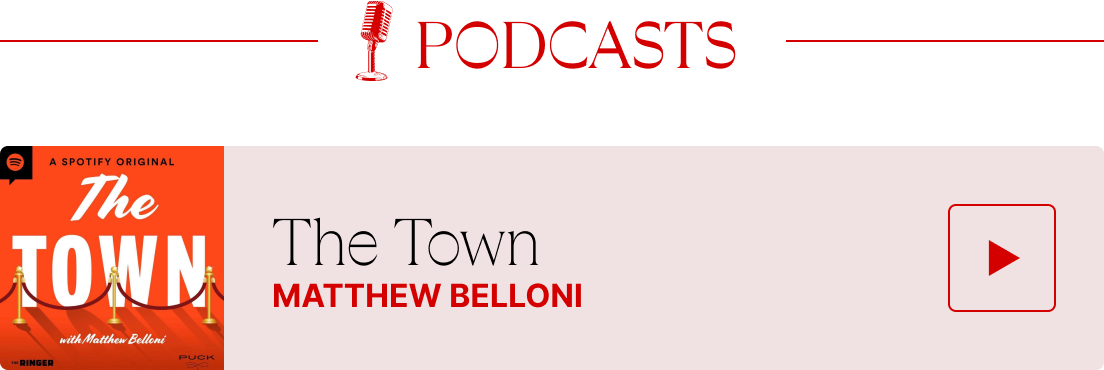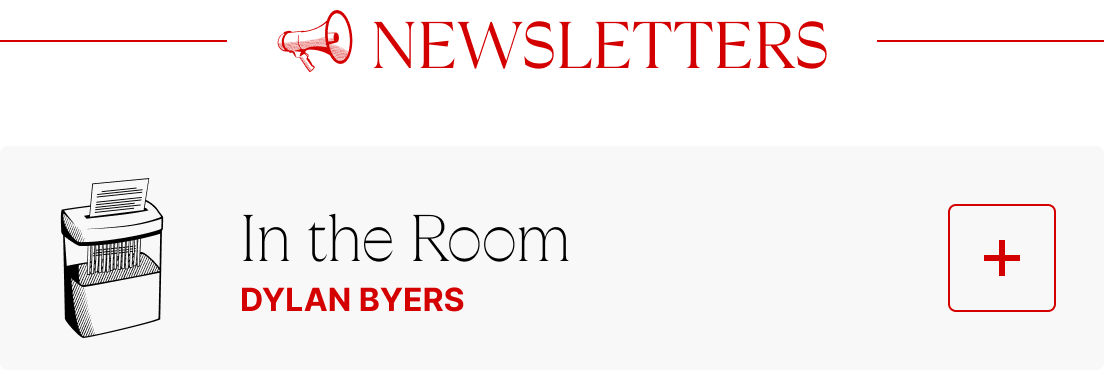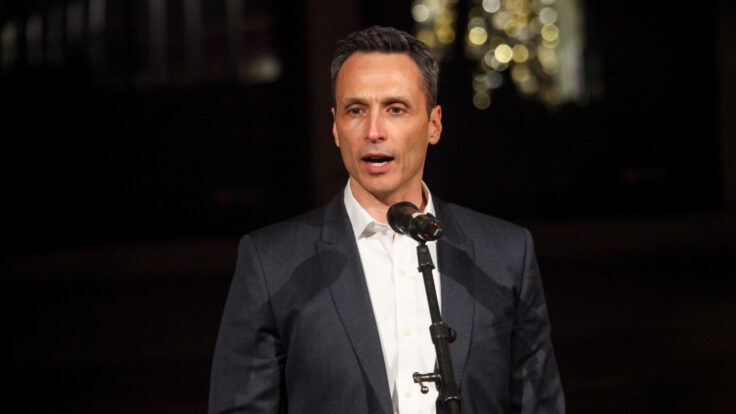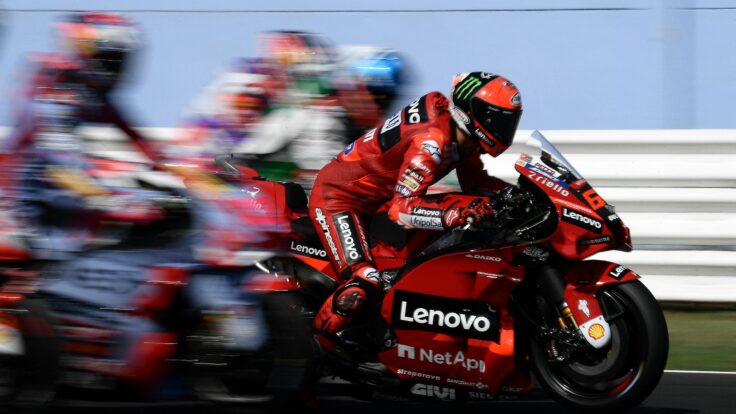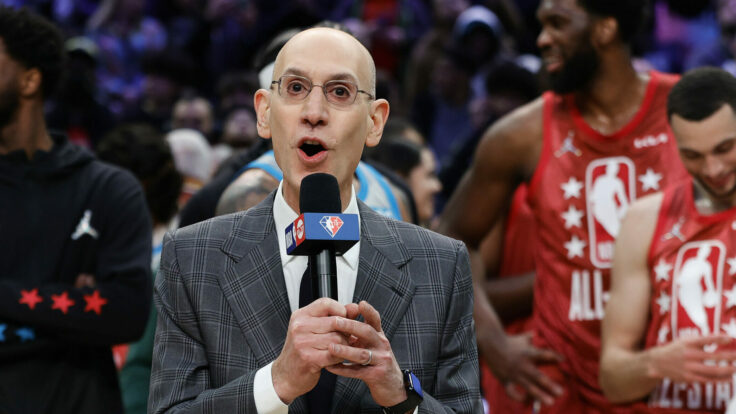Welcome back to The Varsity, my twice-weekly private email on
whoever is making Derik Queen’s N.I.L. deals. The cherry blossoms are blooming here in D.C., just in time for Puck’s First Amendment soirée at the French ambassador’s residence on Wednesday. I’ve already blocked out a half-hour to reminisce about 1990s-era Hoyas basketball with Peter Hamby. As for my Terps… I hear that the weather in San Antonio is lovely this time of year.
🚨 Pod alert: The inimitable Julia Alexander joins the Varsity podcast Wednesday for a deep dive into the various and divergent approaches that streamers are taking to live sports. Below, she explains why Peacock is doubling down on its local sports strategy. Also, be sure to listen to my
conversation with MoffettNathanson’s star analysts Michael Nathanson and Robert Fishman, who offer their typically smart takes on the health of the media business today.
Meanwhile, congrats to Marchand for winning first place at the Crownsville Renaissance Fair for his Norse tradesman costume.
I’m sure all the guys at The Athletic were rooting him on from afar. (Okay, Andrew, back to 2025: The Chablis doesn’t pour itself!)
|
|
|
A MESSAGE FROM OUR SPONSOR
|
PERFORMANCE UNLEASHED
With a distinct sporting personality, the Range Rover Sport is a
peerless performer.
EXPLORE
|
|
|
- Where’s Cinderella?: Minutes after Derik Queen’s electrifying buzzer beater took Maryland to the Sweet Sixteen, the freshman was asked how coach Kevin Willard gets his players to actually listen to his advice. “First, he did pay us the money, so we have to listen to him,” said Queen, laughing. The light-hearted exchange underscored a complaint about this year’s tournament—namely, that N.I.L. rights and the transfer portal have
resulted in the dimming horizons of schools from smaller conferences without big budgets. For generations, March Madness has regularly featured transcendent stories of mid-major schools knocking off favorites and making deep runs—Butler, VCU, George Mason, etcetera. In fact, only a couple of years ago, these mid-majors seemed to have the edge: They had stable rosters with experienced players who could knock off the big-name, one-and-done schools. But this year, for the first time, all
16 schools remaining in the tournament hail from the Power Four conferences: seven from the SEC, four from the Big Ten, four from the Big 12, and Duke from the ACC. We don’t know yet if this is a forever change, but it provides an accurate snapshot of the state of college basketball today.
- The last great linear TV deal: Back in the aughts, March Madness offered a glimpse of the future. It was one of the few big sports properties that streamed
its games—mainly because many of the first-round matchups took place during the workday. But two decades on, sports media has a slightly different view of March Madness. Sure, fans can still stream games, but the tournament remains one of the few big-time sports properties whose fortunes are still intertwined with legacy television.
On yesterday’s The Varsity podcast, MoffettNathanson’s Michael Nathanson addressed the situation: “I’m cognizant of the fact that the rights
have not bled into other systems,” he said. “You’ve got four places to watch it. I don’t have to come home at night saying, What service is it on again? I like the simplicity of it. What’s funny about March Madness is you could argue that this is probably one of the best deals ever done by the networks. It’s all in one place, and it’s not very expensive, relative to what you see media companies paying for everything today. It’s a really great example of how to use linear networks to
create this massive event for three or four weeks.”
- A non-update update on NFL Media: The NFL and ESPN are still talking about a deal that would have Bristol take control of the league’s media entities—including NFL Network and NFL RedZone. The discussions are ongoing, but they have not progressed to the point where a deal is near. Remember, NFL Media first started looking for a partner way back in June 2021, so the league is
not necessarily anxious to get things done.
There are, however, a few reasons the talks are putting off a little more smoke these days. ESPN’s deal to carry the NFL Draft ends with next month’s event, and Jimmy Pitaro’s crew has been negotiating a renewal. I’m told that the NFL Draft talks are separate from ESPN’s negotiations on an NFL Media deal, and several NFL sources have said other media companies are interested in NFL Draft rights, too. Multiple deal talks create a
lot of noise in the market. Also, as Varsity subscribers know, ESPN is launching a direct-to-consumer service this fall, and it would like to have NFL RedZone and NFL Network’s live games as part of that offering.
- What does Apple want?: I encourage you to read this excellent piece from my partner
Matt Belloni about Hollywood’s fears over Apple’s streaming service, Apple TV+, which has only about 45 million subscribers—“far less than Disney+, Max, and Paramount+, all of which launched around the same time,” Matt writes. As The Information
reported last week, Apple lost $1 billion on Apple TV+ last year.
Matt’s beat is Hollywood, but there are some relevant points in this story for
the sports media community. Apple currently has deals with MLS and MLB, and every league and franchise is dying to get the $3 trillion company to the negotiating table when their rights come up. At the moment, Apple TV+ has no “A-level sports rights, despite multiple opportunities to outbid rivals,” Matt notes. “F1 rights are coming up, will Apple even try? If it doesn’t, we will kinda know how serious [Apple services chief Eddy] Cue is about sports.”
- Whack-a-mole soccer: Did you know that the U.S. Men’s National Soccer Team lost twice over the weekend? If you didn’t, you’re not alone. Finding the matches on TV (against Panama on Friday, and Canada on Sunday) was a Sisyphean task, prompting a media executive to text me that the team “dodged a bullet this weekend when they lost twice, at home, in front of empty stadiums” because almost nobody was watching.
“Good luck to
anyone trying to find the game,” the executive continued. “I got so many texts asking for help. First, it was up against March Madness (barrier one). Once you found out where the game was (barrier two), you could only watch it if you were a paid Paramount+ subscriber (barrier three). Once you logged in, people couldn’t actually find the game on the app (barrier four). I personally had to type words into the search function myself to find the game, so there is zero chance a single viewer stumbled
on it by accident. You’d have had a better chance finding an Ourand compliment about Marchand than finding that game. That streaming money looks good in the bank account, but long-term, let’s see how this all plays out when your audience has Costanza-like shrinkage.”
|
Now, here’s Julia on Peacock’s unlikely sports streaming strategy…
|
|
|
Peacock executives, like their counterparts at ESPN, seemingly want
to find out if streaming can be television again by investing in local sports fandoms. If the early streaming wars were a race to see who could disrupt TV fastest, this next phase is a marathon to see who can reinvent it first.
|
|
|
Back in December 2022, when Comcast executives first started talking about folding
NBC’s regional sports networks into Peacock, the streaming service was still something of an enigma. Unlike other pure plays, Peacock was unique among the major players as an ad-supported video-on-demand service with around 20 million subscribers, available at a relatively inexpensive price point. The decision to prioritize the ad tier, it seemed, was an attempt by Comcast C.E.O. Brian Roberts and C.F.O. Mike Cavanagh to test the streaming waters without
upending NBCUniversal’s multibillion-dollar advertising business. It was unclear whether Peacock was a bet on the future of the industry, or merely a hedge.
What would soon become clear, however, was that NBCU intended for Peacock to make real investments in live sports. Peacock broadcast the Beijing Winter Olympics, the FIFA World Cup, a lineup of Sunday morning MLB games, and one of the first major wrestling tournaments to be available via streaming. It’s since
streamed Sunday Night Football and added college basketball, golf, and NASCAR, among others. Basically, whatever is on NBC is also on Peacock. Now, Comcast is bundling its four regional sports networks—the remnants of its old NBCSN strategy—into Peacock, making games in Philadelphia (the 76ers and Flyers), Boston (Celtics), San Francisco (Giants, Warriors), and Sacramento (San Jose Sharks, Kings) available for an extra $15 to $25 a month.
Bypassing the R.S.N.s’ cable exclusivity
was a no-brainer for Peacock. With the traditional pay TV audience dwindling, legacy media companies are under enormous pressure to transition customers to streaming without cannibalizing old business models too quickly. And the best ways to onboard and retain subscribers is by offering predictability (seasonal sports) and reasons to engage (regular season games) that lead audiences to discover other, general entertainment programming.
Peacock’s new plan, which is both strategic and
opportunistic, isn’t going to reinvent the wheel. R.S.N.s are still going away, to be sure. But it is an important experiment for NBCU, which can deploy an owned-and-operated product to determine how important local viewership is to the success of the much larger streaming venture—and at what price fans are willing to sign up and stay.
|
During the past few years, streaming data has shown that sports fandom, including
around local teams, is on the rise. But frustrations over discoverability has also increased. More than 41 percent of respondents to a recent Ipsos survey said that being able to easily watch games was the number one factor when it came to being a fan in a post–pay TV world. This was especially true for younger NBA fans, who account for most of the new
audience growth. Between Peacock’s 50 national regular season and postseason games available to all subscribers, and the added inventory from the R.S.N.s, the streamer suddenly looks like the one-stop platform for a complementary audience to its broadcast networks, at least in certain markets.
And yet, there’s no one-size-fits-all solution: Highly popular, in-demand weekly programming is good, but over the last two years, there’s been a falloff in the number of customers willing to sign
up for tentpole series (from 41 percent to 37 percent), according to Hub Research. Meanwhile, marquee events like the NFL wild card game or the Olympics don’t guarantee that customers will be locked in for the long term. For example, viewers who signed up for last summer’s Paris Olympics on Peacock churned at a higher rate than the average customer, per Antenna.
|
|
|
A MESSAGE FROM OUR SPONSOR
|
PERFORMANCE UNLEASHED
With a distinct sporting personality, the Range Rover Sport is a
peerless performer.
EXPLORE
|
|
|
It’s here where leaning into local, fan-driven sports can help reset audience expectations. Local broadcasts accounted for
nearly 50 percent of all NBA viewership in the ’23-’24 season, according to research firm Vision Insights. In 2024, The Athletic reported that 73.7 percent of NBA fans were watching between one and four games a week. (Diehard fans made up about 15 percent of the audience. The clip-watchers were less than 10 percent.)
In short, simply having the games available on Peacock gives these fans reason to keep returning to the app again and again. Comcast is
betting that bringing a more concentrated group of highly engaged audiences into Peacock will boost the efficiency of the entire platform.
|
This isn’t exactly top secret. NBC, Bravo, and Peacock are the three media assets
that Comcast is not jettisoning into SpinCo. NBC represents mass-appeal programming and sports that still reach significant audiences. Bravo offers low-cost programming that overindexes with Millennial and Gen Z audiences. Then there’s Peacock, ostensibly one of Comcast’s distributors of tomorrow, which is attempting to bridge all of these different worlds in the most efficient way possible. That requires spending smart, not spending more.
Peacock executives are likely paying
attention to a particular data point from Hub: Namely, that more than 70 percent of sports fans are more likely to watch a show advertised to them during a sporting event, while 66 percent of viewers admitted to staying on a channel after the game to watch a show they weren’t interested in previously. That’s more valuable than ever in a streaming world where customers are still relearning how to search for and discover new content. Netflix, of course, is the master of algorithmic recommendation.
Peacock is presumably banking on live sports providing the streaming equivalent of what used to be known as lead-in programming.
This is why Netflix touts engagement as its most important health metric: Take away the ability to channel surf, and you take away discoverability, which makes it much harder to capture a casual sports fan. If Peacock can use regular-season sports to persuade audiences to stay for a new show or movie, it may help with overall efficiency across the
platform. That said, whether that offsets the price of acquiring those specific audiences is a question for Peacock’s analytics team.
Of course, this plan could backfire. Disrupting the R.S.N. system, even if it’s all but dead, and bringing new, expensive sports like the NBA to Peacock, means there’s likely a sizable price increase around the corner—which is typically a precursor to big churn moments. After all, the cat-and-mouse game at the heart of a subscription product gets more
complicated when 40 percent of all subscription activity comes from re-subscribers. You’re not just trying to capture new attention, but re-prove the value of a product to someone who already knows what to expect. That’s sometimes a harder sell. Hence the push into advertising, and the push for eventized tentpole programming.
Peacock executives seemingly want to find out if streaming can be television again. If the experiment is successful, I wouldn’t be surprised to see an even stronger
push into local sports. Other companies, including ESPN, are apparently gung ho about making the same bet. If the early streaming wars were a race to see who could disrupt TV the fastest, this next phase is a marathon to see who can reinvent it first.
|
On Netflix’s NFL ambitions: “Listening to your conversation with the guys
from MoffettNathanson got me thinking: How long until we have a Super Bowl on Netflix? Obviously, there’s already an existing rights schedule. But I imagine the Super Bowl is exactly the tentpole-like event that Netflix would snap your hand off to show on its platform (it being the biggest TV event of the year helps, for sure.) Is the future of tentpole sporting events on streaming platforms with global reach?” —A political reporter who can tell where the wind is
blowing
On last week’s Player of the Week: “While Mike Slive deserves a ton of credit for SEC hoops, he passed away before Bama hired Nate Oats.” —A Varsity subscriber
[Ed. note: Of course, I meant to write Greg Sankey, who has been the SEC’s commissioner for a full decade, instead of Slive, who passed away in 2018. Dammit, Marchand!]
On the
SEC’s football prowess: “I have a bone to pick about your SEC/Greg Sankey Player of the Week note on Thursday. You included Texas A&M as some historic football power. A&M hasn’t won a national title since 1939. They’ve had some great players and coaches, and they have a lot of donor money, but that doesn’t make one worthy of being mentioned with the other schools you name checked. Also, their bellyaching when it was announced that Texas was joining the SEC is not the way a football power
would react.” —A Varsity subscriber who knows the score
On the Varsity’s podcast guest list: “With David Hill set to receive the SBJ lifetime achievement award later in May, I would love to hear another wide-ranging interview between you and Mr. Hill on his career and the current state of sports media.” —A sports TV producer who knows good content when he hears it
On an 18-year-old freshman
from Baltimore: “That Maryland game was amazing! Huge win!” —A Varsity subscriber who has joined Terp nation
On March Madness: “I had the Don’t take it too hard, Marchand went to Ithaca email all ready to send, and then that happens? I’m now all-in for the Maryland Teenage Mutant Ninja Turtles!” —A finance director who makes sound decisions
|
|
|
Puck founding partner Matt Belloni takes you inside the business of Hollywood, using exclusive reporting and
insight to explain the backstories on everything from Marvel movies to the streaming wars.
|
|
|
Ace media reporter Dylan Byers brings readers into the C-suite as he chronicles the biggest stories in the
industry: the future of cable news in the streaming era, the transformation of legacy publishers, the tech giants remaking the market, and all the egos involved.
|
|
|
Need help? Review our FAQ page or contact us for assistance. For brand partnerships, email ads@puck.news.
You received this email because you signed up to receive emails from Puck, or as part of your Puck account associated with . To stop receiving this newsletter and/or manage all your email preferences, click
here.
|
Puck is published by Heat Media LLC. 107 Greenwich St, New York, NY
10006
|
|
|
|
